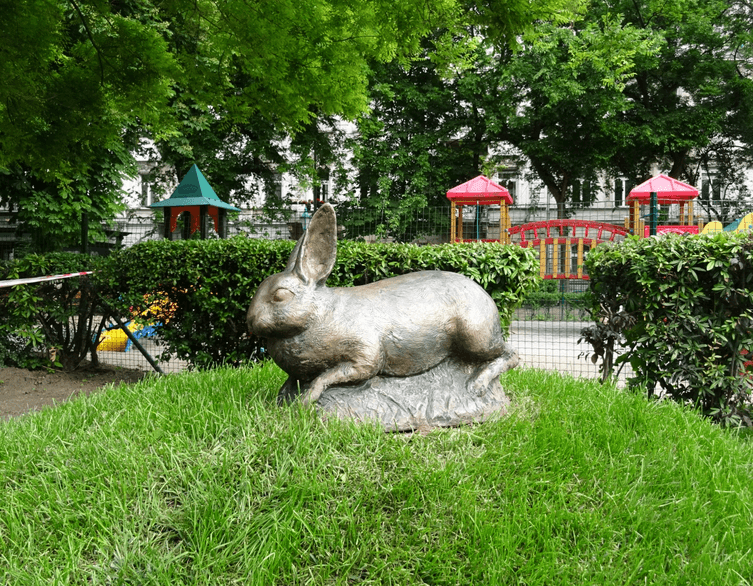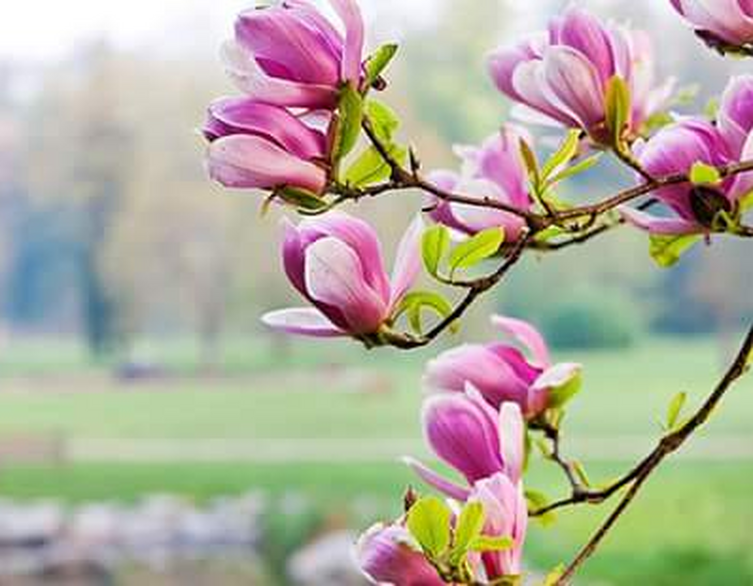Károlyi Garden: Budapest’s Secret Oasis Among Europe’s Most Beautiful Parks

Hidden behind imposing iron gates in Budapest’s Fifth District lies a green sanctuary that recently earned recognition from The Guardian as one of Europe’s ten most beautiful secret gardens. Károlyi Garden stands alongside Madrid’s El Capricho Park, Paris’s Anne Frank Garden, Milan’s Brera Botanical Garden, and Copenhagen’s Royal Library Garden on this prestigious list. For visitors exploring Budapest, this historic park offers a peaceful retreat that reveals layers of Hungarian history within its carefully maintained grounds.
A Hidden Gem in Budapest’s Heart
When you first approach Károlyi Garden from the bustling streets of downtown Budapest, those formidable iron railings might seem unwelcoming. Don’t let them deter you. Beyond that barrier awaits what many consider Budapest’s oldest park, a harmonious blend of different garden styles that has evolved over centuries. The Guardian’s writer captured it perfectly, describing how geometric flower beds and fountains coexist beautifully with English-style pathways and plant compositions, creating a space that feels both structured and natural.
The park holds another remarkable distinction—it’s home to Hungary’s oldest mulberry tree. This ancient specimen stands as a living witness to the garden’s long history, having survived wars, floods, political upheavals, and dramatic changes in the park’s fortunes. When you stand beneath its branches, you’re touching a direct connection to centuries of Budapest life.
From Private Aristocratic Retreat to Public Treasure
Understanding Károlyi Garden’s significance requires stepping back through Budapest’s history. The site itself has medieval roots—archaeologists discovered that the garden was built atop the ruins of a cemetery dating possibly to the 11th century. This discovery came during World War II when workers began constructing an air raid water reservoir in the garden’s center. Even amid that terrible conflict, authorities called in the Archaeological and Excavation Institute, which uncovered burial remains, coins, belt buckles, and bronze rings from the original cemetery.
The property changed hands several times before the Károlyi family acquired it in 1768 as the courtyard of their palace. The aristocratic family initially created a baroque garden in the English style, later transforming it with classical elements. These weren’t simple decorative choices—they reflected the family’s cultural sophistication and their desire to create a space that balanced formal grandeur with natural beauty.
The 1838 flood that devastated much of Pest severely damaged the garden, but the Károlyis rebuilt it. Following the 1848-49 revolution and war of independence, they revitalized the space once again, this time adding exotic plants in their greenhouse and creating amenities like arbors and a tennis court for family and guests. For decades, this remained an exclusively private paradise that ordinary Budapest residents could only glimpse from the street.
When the Public Could Only Dream of Entry
Although common people couldn’t enter Károlyi Garden during its aristocratic period, they deeply admired it from outside. An 1880 description by Vajda Viktor, a prominent educator and writer, captures the garden’s allure perfectly. He wrote about how acacia trees leaning against the garden’s fence offered their flower clusters to the street in spring, and how landlords in surrounding buildings charged higher rent for apartments overlooking the garden, “thus secretly profiting from the count.”
Best deals of Budapest
Viktor praised the garden’s proportions and graceful details, noting how it managed light and shadow with artistry. He particularly admired the pleasure ground visible through the iron railings from Egyetem Street—the ever-green, ever-fresh lawn carpet that he compared favorably to Margaret Island’s grass, and the consistently beautiful views in every direction.
This glimpse of aristocratic privilege visible to but forbidden for ordinary citizens made the garden even more desirable. When financial difficulties nearly forced the family to demolish the palace and build rental housing in the early 20th century, many Budapestians must have feared losing even their view of this beauty.
A Genius Move Saves the Garden
Count Mihály Károlyi, a former prime minister, made a brilliant decision in 1929 that preserved the garden for future generations. Rather than allowing the property to be destroyed for development, he transferred it to state ownership. This extraordinary act of generosity meant that by 1932, the former private garden could open as a public park, finally allowing everyone to enjoy what they had long admired from afar.
The transformation represented more than just changing who could enter—it symbolized a shift in how society viewed green spaces. Parks were no longer luxuries for the wealthy but essential public amenities that improved quality of life for all residents. Károlyi’s decision ensured that this particular green space would serve that democratic purpose.
Surviving War and Metro Construction
World War II brought Károlyi Garden perilously close to destruction. The construction of that air raid water reservoir not only uncovered ancient burials but also damaged much of the garden. The park suffered additional severe damage during the fighting, and restoration took considerable time. The garden reopened to visitors after the war and remained accessible until 1970.
Then came another threat—the construction of Budapest’s M3 metro line. The park became a staging area for construction materials and equipment, and workers completely cleared its vegetation. For more than a decade, this historic green space disappeared under machinery and building supplies. Only in 1981 did replanting begin, gradually restoring the garden to something approaching its former glory.
These interruptions in the garden’s life highlight an important aspect of visiting historic sites—what you see today often represents careful reconstruction and ongoing maintenance rather than continuous existence. The Károlyi Garden you walk through now carries the DNA of its aristocratic past, but it’s also a testament to multiple restoration efforts by people who believed it was worth preserving.
The Beloved Károly the Rabbit
No account of Károlyi Garden would be complete without mentioning its most famous modern resident—Károly the rabbit. This black Belgian giant rabbit didn’t belong to the garden’s natural wildlife; according to local legend, visitors abandoned him under a bush, and the local government adopted him. For six years until 2015, Károly lived in a cage near the public restroom and became a beloved fixture. Staff released him several times daily for walks, and visitors made special trips to see him.
When Károly died, the garden erected a statue in his memory—a charming bronze rabbit that now serves as a photo opportunity and conversation starter. In 2016, a rescue rabbit named Karcsi arrived to continue the tradition, living in the original cage but enjoying an improved, multi-level house. The Guardian specifically mentioned Károly in their article, showing how even a simple rabbit story can become part of what makes a place special and memorable.
What Makes It Special for Visitors
Several elements combine to make Károlyi Garden worthy of The Guardian’s recognition and worth including in your Budapest itinerary. First, there’s the sheer rarity of finding such a well-preserved, well-documented palatial garden that has maintained its original function. Most such spaces were either destroyed or drastically altered over the centuries. Károlyi Garden’s continuity, despite interruptions, provides an authentic connection to Budapest’s aristocratic past.
Second, the garden’s location in the heart of Budapest’s Fifth District makes it remarkably accessible. You don’t need to travel to the outskirts or make special transportation arrangements—it sits right in the downtown area, easily combined with other sightseeing. After hours of walking Budapest’s streets, exploring its museums, or shopping, you can step into Károlyi Garden and immediately feel the pace slow down.
Third, the harmonious blending of different garden styles creates visual interest without feeling chaotic. The geometric central flower beds provide structure and seasonal color. The English-style pathways invite wandering and discovery. Mature trees offer shade and a sense of timelessness. The fountain adds soothing water sounds. Each element contributes to an overall atmosphere of refined tranquility.
Practical Considerations for Your Visit
Károlyi Garden is located at Károlyi Mihály utca 16 in Budapest’s Fifth District. The entrance through the former Károlyi Palace on Egyetem Street provides the most impressive approach, just as 19th-century visitors described. The park is open daily, though hours vary by season—typically from early morning until dusk or 8:00 PM, whichever comes first.
Admission is free, making it an excellent budget-friendly activity in a city where costs can add up quickly. The garden isn’t large—you could walk through it in fifteen minutes—but that’s not really the point. This is a place for sitting on a bench with a book, watching children play in the playground, or simply soaking in the peaceful atmosphere. Plan to spend at least thirty minutes to an hour if you want to truly appreciate what you’re seeing.
The park’s relatively modest size means it can get crowded on beautiful weekend afternoons when local families descend for picnics and playtime. Visiting on a weekday morning or early evening often provides a quieter experience. During spring, when those acacia trees bloom and offer their flowers over the fence just as they did in Vajda Viktor’s time, the garden becomes especially photogenic.
Beyond the Garden Walls
Károlyi Garden’s location in the Fifth District means you’re already in one of Budapest’s most interesting areas. The surrounding streets contain bookshops, cafés, small museums, and beautiful architecture. The Great Synagogue, Europe’s largest, stands within easy walking distance. Váci Street, Budapest’s main pedestrian shopping street, is nearby. The Danube riverbank, with its stunning views of Buda Castle across the water, is just a short stroll away.
This concentration of attractions makes Károlyi Garden perfect for building into a larger itinerary. You might start your morning exploring the nearby Hungarian National Museum, stop at the garden for a peaceful interlude and perhaps a packed lunch, then continue to the riverfront for afternoon sightseeing. Or reverse the order—spend your morning walking along the Danube or exploring Castle Hill, then retreat to the garden’s shade during the hottest part of the day.
Why It Matters
The Guardian’s recognition of Károlyi Garden as one of Europe’s most beautiful secret gardens isn’t just nice publicity for Budapest tourism—it highlights an important aspect of what makes cities livable and worth visiting. Great cities aren’t defined solely by their grand monuments and famous museums. They’re also characterized by their smaller treasures, the green spaces and quiet corners that offer respite and beauty in everyday life.
Károlyi Garden represents Budapest’s ability to preserve and celebrate its history while making that history accessible to everyone. What was once a privilege of one aristocratic family now enriches the lives of countless residents and visitors. The garden’s survival through floods, wars, and metro construction demonstrates the community’s commitment to maintaining these precious spaces even when practical pressures argue for sacrificing them.
For tourists, discovering places like Károlyi Garden provides a different kind of Budapest experience than visiting the Parliament building or soaking in Széchenyi Thermal Bath. Those major attractions are spectacular and shouldn’t be missed. But this garden offers something equally valuable—a glimpse of how Budapestians actually live, a chance to sit where locals sit and see what they see daily, and an opportunity to understand the city on a more intimate scale.
When you rest on a bench under that ancient mulberry tree, you’re participating in a tradition that spans centuries. The surroundings have changed—you’re not an aristocrat in an exclusive private garden—but the fundamental experience of finding peace and beauty in a carefully tended green space remains exactly the same. That continuity, that connection across time, is what makes Károlyi Garden truly special and fully deserving of its place among Europe’s most beautiful gardens.
Related news
Related attractions



















